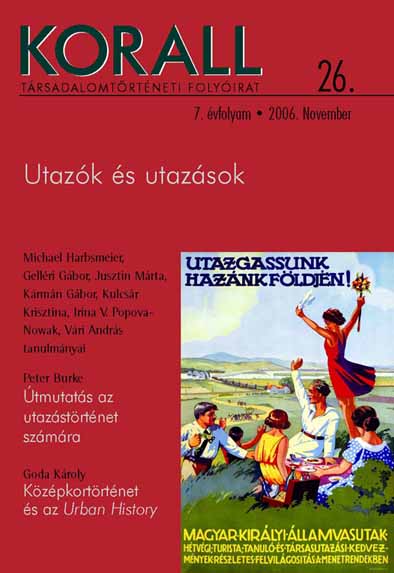Identitás és határok. 17. századi magyar utazók nyugaton es keleten
Identity and borders: 17th century Hungarian travellers in West and East
Author(s): Gábor KármánSubject(s): History
Published by: KORALL Társadalomtörténeti Egyesület
Summary/Abstract: The survey discusses the identity and self-image of 17th century Hungarian andTransylvanian travellers as conveyed through their travel texts. Thecultural bordersin the mental map of the travellers coincided with the Eastern and Southeasternborders of Transylvania. Theauthors placed themselves in the same positionas their Western European contemporaries: although the general tone intheir diaries was that of admiration, they did not make explicit comparisons tothe disadvantage of their home. Th ere are also some cases of criticism on civilisationalbasis towards the West, which shows, that the travellers felt that theystayed on equal grounds with the West. Thefew cases of auto-stereotypes alsoshow that some travellers tended to reinforce even the negative stereotypes attributedto Hungarians, in order to question the Western discourse which placedthem on a lower grade on a civilisational scale. Towards the Eastern neighbours,the travellers tended to use a condescending tone, qualities such as boorishness,lack of education and barbarity were attributed to Russians, Wallachians andMoldavians. Theworst reputation was the share of the Ottomans: in their case,even if – in a very few cases – tolerance and understanding came into picture,there was no possibility of acceptance. Hungarian travellers only used the discourseof their own inferiority towards Western Europeans, when it was a part oftheir political agenda: otherwise, they included themselves into the concept ofthe region, imagined on the basis of erudition and Latin education, which theymore and more often called Europe.
Journal: Korall - Társadalomtörténeti folyóirat
- Issue Year: 2006
- Issue No: 26
- Page Range: 72-98
- Page Count: 27
- Language: Hungarian

